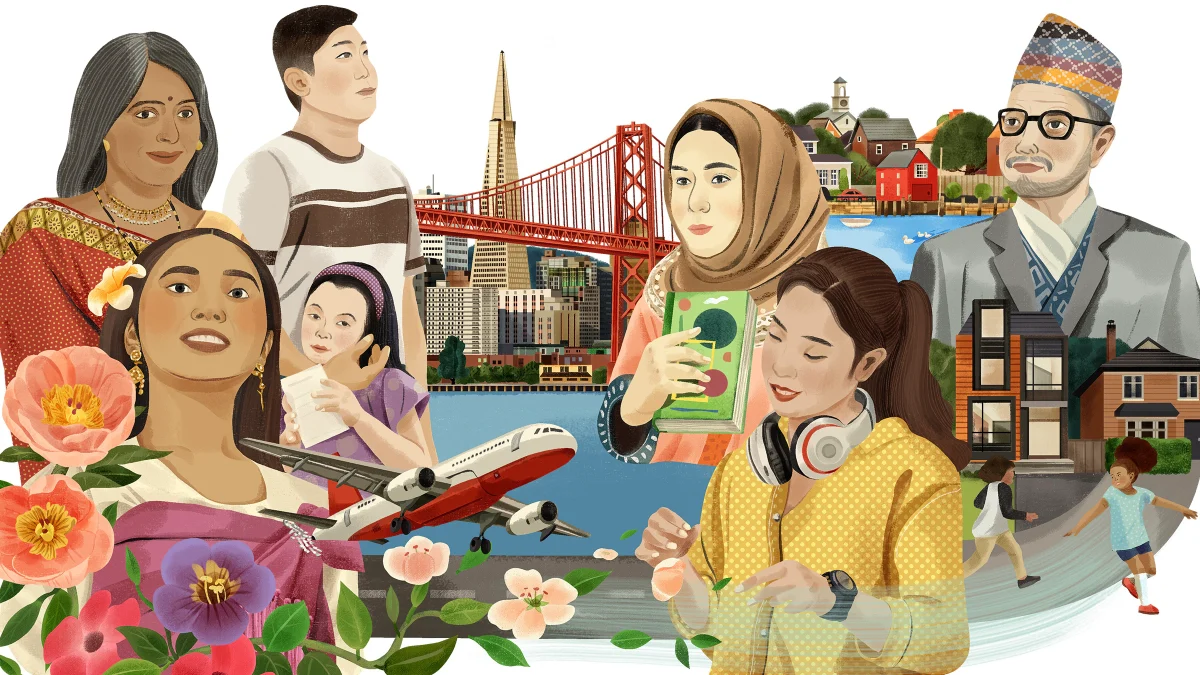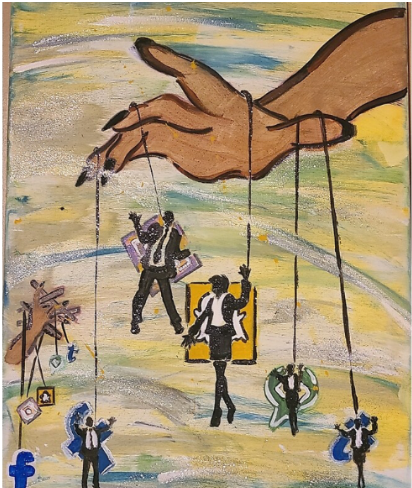To honor the contributions and accomplishments of Asians in America, Asian American and Pacific Islander Heritage Month was first celebrated in 1990. Despite this attempt at inclusion, a great deal of American Asians do not feel particularly honored. Due to human nature, racism has been and will sadly always be an issue. Acts of racism are carried out in a myriad of ways; the most obvious are verbal and physical assaults. Since laws allowing racism no longer exist, many racist acts are carried out in small bits and pieces that can fly under the radar.
Asian? What’s that?
When people refer to Asians, people often just think of Chinese people. But, contrary to popular belief, Asia is not just China, India, Japan, the Koreas, and some other pieces of land. In reality, Asia contains 48 countries, all of which have around 9,000 years of unique culture and history. Asia is separated into five regions: East Asia, Southeast Asia, South Asia, South-West Asia, and Central Asia. West Asia includes most of the Middle East. (The Middle East is a political term that changes over time while West Asia is a geographical term that consistently refers to the same area.) North Asia is technically a separate region, but it is still a subregion of Asia. So, this begs the question: When people say “Asian,” who are they referring to?
Each culture is vastly different, so it’s disappointing and insulting when people group Asians all the time. Obviously using the term “Asian” is fine, just like the word “European.” The difference is, that most Americans can name plenty of differences among European nations, while not much is known about Asia at all. Usually, all people know is that China is a communist country and it has the Great Wall, South Korea has kimchi, Japan is a high-tech country with anime, boba, and sushi, India has a lot of people and there’s Hinduism, and North Korea is the country with the cruel dictator where no one wants to live. Americans learn a ton about Europe and America’s history and not enough about other nations. It’s important to teach plenty of cultures and perspectives, not just Eurocentric views. There is a deficit of Asian history taught in schools, among plenty of other groups.
Most people cannot name a single prominent Asian American/Asian, and even when named, people usually don’t know what the person has achieved because they’ve only heard of the name and that’s it. Even though China significantly contributed to different areas of development, they are not properly credited and the curriculum just jumps to European innovations. Asian countries have a rich history in literature, the arts, philosophy, and the sciences, just like Europe. Education about Asian history and culture should not be skipped over as it can lead to the alienation of Asians in American society.
The “Chinese Virus”
Due to the coronavirus, there was a significant rise in hate crimes and racism towards Asians in the US. In the five months from February to July 2020, there were 2834 reported hate incidents against Asian Americans and Pacific Islanders. This number is an 845% increase from the number of reported incidents in 2017, 2018, and 2019 combined. However bad it seems, it gets worse as many incidents go unreported. (The data from 2021 may be misleading, as there was a drop in crimes, but this data was drawn from a smaller number of law enforcement agencies than in 2020.)
According to the Pew Research Center, “as of 2021, one-third [of English-speaking Asian adults] said they feared someone might threaten or physically attack them. English-speaking Asian adults in 2022 were also more likely than other racial or ethnic groups to say they had changed their daily routines due to concerns they might be threatened or attacked.” These statistics are very disheartening. Asian Americans should not have to fear violence for being Asian, especially not in their home country, and definitely for something that isn’t their fault. Just like how the number of discriminatory acts and crimes towards Muslims rose after 9/11, the rise in crimes against Asians needs to be called out and confronted.
Former President Trump’s referring to Covid as the “Chinese virus” did not help matters. But when President Biden was voted into office and the coronavirus was no longer casually referred to as the “kung flu,” the statistics of anti-Asian acts did not change. Many Asian Americans, whether Chinese or not, were harassed, injured, or even killed because it’s “their fault” that Americans are suffering from the pandemic, even though everyone is suffering and Asian Americans are Americans as well. This racist treatment relies on the assumption that just because someone has origins in a country, they are forever connected to that country and should take responsibility for whatever it does, which is untrue and ridiculous.
The Myths of the “Model Minority”
Although somewhat based on truth, the “model minority” stereotype is detrimental to Asians. The stereotype is what it sounds like Asians are perfect straight-A students. At first glance, it may seem like a benefit, because wouldn’t it be great for others to automatically assume a person to be smarter because they’re Asian? This is not the case, since this stereotype discounts the fact that Asian students succeed well in school mostly due to cultural traditions combined with hard work.
Studies have shown that Asians do not have a genetic advantage in academics, so it must be the behaviors and viewpoints surrounding education that give Asians what many call an “unfair advantage.” Psychologists confirm that “academic success is not determined by cognitive ability alone but also by a multidimensional set of capabilities that are referred to as ‘noncognitive skills’ … and ‘self-control’ and ‘motivation processes’ … qualities such as attentiveness, self-control, motivation, and persistence may be as important as cognitive abilities in positively affecting academic performance. “ Usually, Asian cultures emphasize the value of education more than other cultures, leading to Asians having a stronger work ethic and thus achieving better grades and doing better in school overall. Americans usually view academic success as something innate; if someone is smart, that’s great. If they’re not, that’s fine. On the other hand, in Asian cultures, if someone tries hard enough, then they will succeed at some point. It’s not that one way of thought is better than the other, it’s just that one viewpoint promotes expanding more effort in academics and the other viewpoint does not emphasize that being academically successful is the most important aspect of one’s character.
The “model minority” thought process segregates Asians and promotes unhealthy mindsets. Not only that, it unconsciously persuades teachers to perceive other races with unfairly negative perceptions. Teachers will always unconsciously compare students against one another, but with the “model minority” stereotype, there will be extremely unfair judgments against other races, especially Black and Hispanic students. There’s the thought of, If this one ethnic group that faces racism are good students, why can’t these other ethnic groups that also face racism be good students? With some classes, resentment and unhealthy competition can be created amongst students of different races. This stereotype raises a specific group of people on a pedestal, which is something that is seen often with celebrities and should never be done.
Forever Foreigners
“Model minority” is harmful in other ways. It separates Asian Americans from other Americans in the “you’re all the same, but different from the Americans” way. Many American Asians are asked questions like “How did you learn English?,” “How is your English so good?,” and “Where are you really from?” The first question could be attributed to simple ignorance or an incorrect assumption, which could be excusable. The second and third questions insinuate that there is some wondrous reason why an Asian would know English so well or that an Asian couldn’t possibly be from the US.
The fact that these questions are being asked only demonstrates how most Americans naturally view Asian Americans as foreigners. 39% of Asian Americans in a 2023 study said that people automatically assume that they do not know English. Not only is this quite rude, but the implication that someone does not know English just because they’re Asian supports the harmful “Asians are foreigners” viewpoint. There is no reason why any race should be automatically assumed to be worse at English. A part of why Asian contributions to society are overlooked or forgotten is the foreigner viewpoint.
Especially since the coronavirus, there has been a rise of verbal assaults with the general meaning of “go back to where you came from,” even though most victims were born and raised in the US. These types of insults encourage the view of seeing Asians as outsiders emphasize the alienation of a race and contradict America’s supposedly openly welcomed multiculturalism. Someone born and raised in the US should not be viewed as a foreigner, especially since the US would not exist without immigrants.
One Example of Many
A recent example occurred at the Met Gala, which took place on May 6, 2024, in New York’s iconic Metropolitan Museum of Art. On this occasion, the first-ever K-pop group, Stray Kids, was invited to the Met Gala. Upon entering the museum and posing for photos, the K-pop idols were met with loud and highly unprofessional sarcastic remarks from photographers. These photographers were not random paparazzi, but instead, they were sent by well-established and credible news stations, which worsens the severity of the wrongdoings.
These comments included statements such as “tone it down,” “I’ve never seen so many unemotional faces in my life,” and “they’re robots.” The first comment could be excusable in certain contexts, such as when children are bouncing off of walls. Unsurprisingly, this was not the case. The K-pop members were just posing for photos, as one normally would do on a red carpet with photographers. The second comment is just plain rude and disrespectful and dehumanizes them. The third statement operates on the obviously untrue idea that Asians are “programmed” to be “all the same.”
Even though these statements could be applied to most other people in attendance, this photographer only mocked and insulted the K-pop idols, meaning that he was racist and not just rude. The sad thing is, he may not have even realized that he was being racist; it’s very common for people to make racist jokes that they believe to be humorous.
Continuing on, the photographers also complained about having to take more photos once Stray Kids took off their jackets, as if taking photos wasn’t their job. Besides, outfit changes are fairly common for an event like the Met Gala, so there was no valid reason to complain. The photographers also grumbled about having to explain that the eight K-pop members before and after taking off their jackets were actually the same people, because, you know, every Asian looks the same, so different outfits mean that they’re different people.
The list does not end there, however, as the photographers mocked Stray Kid, acting as if they were going to perform right then and there on the red carpet, requesting them to say something in Korean, and asking them to “do something crazy” such as jumping. Fortunately, this one-sided conflict did not escalate whatsoever as the blatant disrespect and racism were met with indifference and politeness from Stray Kids.
Many struggles commonly faced by American Asians are shown through the treatment Stray Kids received at the Met Gala. The issue of assuming that Asians, or anyone in general, are bad at/do not know English is very harmful, for reasons mentioned earlier. Speaking bad about someone or mocking them in a language the victims “can’t” understand is rude at best and extremely racist at worst. Also, the assumption that Stray Kids did not know English is incorrect. With a singular web search, one can figure out that two members were born in and grew up in Australia before moving to Korea, in addition to the other six members being able to speak and understand English fairly well.
The comments relating to the “every Asian looks the same” stereotype may have truth to it, seeing as most people of the same race look similar. But, this logic itself is a bit flawed. If someone does not grow up around a certain race, then they will not be able to identify those people very well, and thus they will look “the same.” This is a fact, and not just for Asians; it can be applied to any ethnic group. “Asians look the same” has become an excuse for people to put lackluster effort into identifying Asians. For Asians, most white people look “the same,” yet saying that in a conversation is pretty unheard of.
Another issue with Stray Kids’ experience is the common dehumanization of Asians through viewing them as unemotional, robotic, and homogenous. This can be especially dangerous as it contributes to the increase of hate crimes and violence against Asians. If Asians are supposedly “not” human, then they are “inferior.” After all, all humans are equal and humans are the best. These thought processes will ensure that there will be low effort towards treating Asians as equals and there won’t be much sympathy for anti-Asian crimes.
Asians are somewhat believed to be “immune” against racism as they are usually pretty successful and seem to be doing pretty well in general. However, just because it does not seem to exist does not mean it is nonexistent. We need to work together to stop the invisible anti-Asian American hate. Just because there’s more racism towards other groups doesn’t mean that this is not a worthy fight. It’s not a competition to see who faces more struggles, it’s a group effect to make sure there’s as little racism as possible.












